Few things give me greater satisfaction than a mind blowing room makeover. I am besotted by ‘before and afters’. Hooked by the much-anticipated ‘reveal’. Driven by a desire to hit the Italian version of a Home Sense store and fill my cart with delectable accessories, carefully color coordinated to make me swoon.
I admit it. I am an HGTV junkie. I am transfixed by the transformation of dull to dynamite.

before living room 
after living room
Fortunately, I’ve had the advantage of working on several HGTV shows as a producer and director in Canada. I was on set with top-notch designers, decorators and construction experts. I worked and watched. And learned from the best. A passion for home design ignited during those years. A passion I had the chance to explore while first renovating our WW11-era house in Toronto and then our 600-year old medieval village house in Italy.
Let’s just say, there were a few distinct differences. Renovating a 14th century stone building with no straight walls and many original features was no small feat. This was to be the mother load of renovation projects – overseeing the complete restoration of our Umbrian townhouse – with only a rudimentary understanding of the Italian language and a complete misunderstanding of the Italian work ethic.
Oh yes, different indeed from a renovation project in Canada. But there were invaluable lessons learned along the way and friendships forged that remain strong today. After all, if you can renovate a house in Italy, you’re up for the challenge anywhere.
Starting a renovation in Italy
Those of you following La Dolce Vita Diaries may recall my post on buying a house in Umbria. If you haven’t read it, here is the link. https://ladolcevitadiaries.com/my-house-in-umbria-buying-a-house-in-italy/
Our excitement at owning a piece of a medieval village in Italy has never wavered. Not when we were told the roof had to be replaced, or that we couldn’t make any changes at all without the consent of the province since our home was considered a historical building.
We were enthralled with the process. In Italy, you must have a person called a geometra, a type of architect oversee your renovation. He/she makes sure all the paper work is in order, files requests for changes and in general ensures that the work is being done by your contractor according to regulation and permissions.
In our case, we had a lovely man named Daniele work with us. He speaks very little English and at the time, I spoke very little Italian – a definite challenge for both of us. During our initial walk through of the house where I described what changes we wanted to make and Daniele took notes, there was much hand gesturing and general charades acted out to try to get my desires across.
Daniele smiled what I came to know as his ‘I have no idea what she’s talking about’ sheepish grin and just kept nodding. When our walk through was over and he was leaving I asked him if he understood everything. He smiled again but nodded ‘no’. We both started laughing hysterically, tensions released but fear mounting on my part as to how I was going to possibly pull this off.
Peter was back in Toronto for most of the trips I took back and forth in the coming year to oversee the main part of the renovation. It was just me, Google translate on my laptop, and my Italian mobile phone. We were on our own.
It took several months for the permissions to come through and for all the quotes to come in from the contractors. In Italy, contractors give a preventivo or quote that is sealed and given to the geometra. You then sit down and open all the quotes and decide which one you want to go with. All very top secret, above board and kind of fun.
In the end, we chose a local contractor from our town. We wanted to give as much work as we could to locals from Paciano. For us, this was an important consideration throughout the renovation and something I believe the locals appreciated very much.
From the day the scaffolding went up, they estimated it would take the team of four workers just over five months working full time to complete the bulk of the renovation. It was time consuming to move machines and heavy beams in and out of the historical center. Fortunately, we have a large back garden, a rarity in walled hill towns. They hoisted mixers and materials over our 20-foot high medieval wall and used the garden as a staging area.
When I saw the cement bags and machines churning my heart sank. It looked like a war zone. But it was nothing compared to the shock of seeing the effects of the sand blasting. Many of the centuries-old chestnut beams had been white washed over the years. There were layers of old paint that needed to come off to restore them to their original color. Sand blasting was the only way.
I happened to arrive from Toronto the day the blasting started. By day two, there was about two feet of sand covering all the first and second floors of the house. Dust was billowing out of all the windows. It was impossible to walk inside. I didn’t take any photos. This was a part of the work I didn’t want to remember. Our poor house looked like it had been bombed. Then in came the giant vacuum and literally sucked up the beach. I looked up and clearly saw the original grain of the old wood, with all its imperfections. I wondered about all the people over the past 600 years who had lived and loved under those chestnut beams. What were their stories? I still marvel today at the history our home contains. Preserving the historical nature of the house was very important to us. We wanted to strike a balance between old and new, to create a space that was respectful of the past but with a modern touch.
This dual approach is evident in the restoration of the fireplace. When we bought the house, the old original piece was the hearth made of Pietra Serena, a gray sandstone used extensively in Renaissance Florence and by Michelangelo in Rome. Over the centuries, the rest of the fireplace was replaced by ugly, painted cement and a wooden door. Inside, we found old iron hooks tucked away to one side – likely used to hang a big pot over the open fire where the family meal would slowly bubble away while the menfolk toiled in the nearby fields.
We kept the hooks but got rid of the ugly cement. In its place, we had a new fireplace frame and mantle made out of Pietra Serena like the hearth, the same stone, carved 600 years apart. One day, we like to think of how the new gray will blend in to look like the old, blackened hearth – a true blending of old and the new.
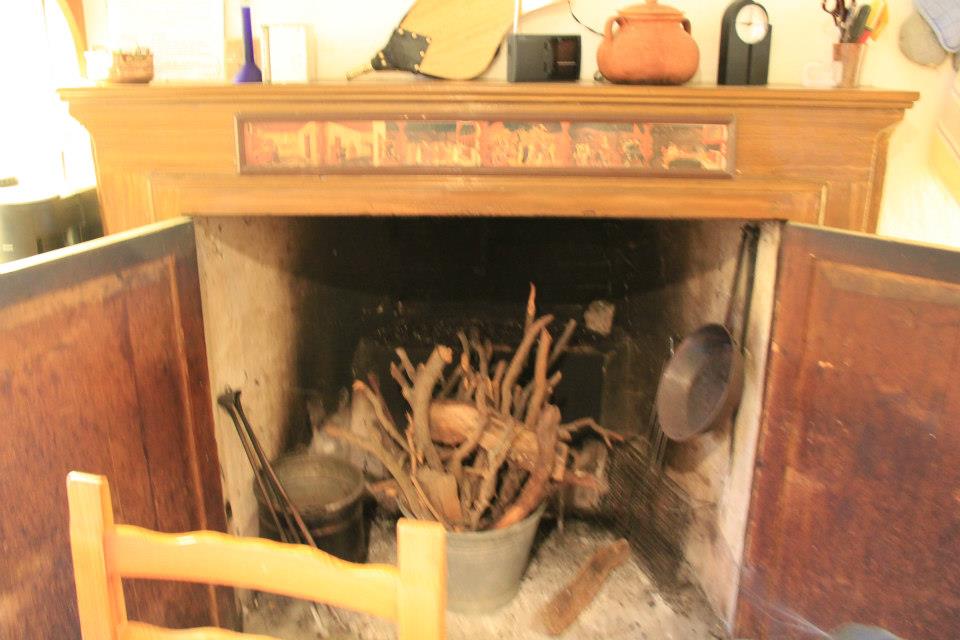
Before fireplace 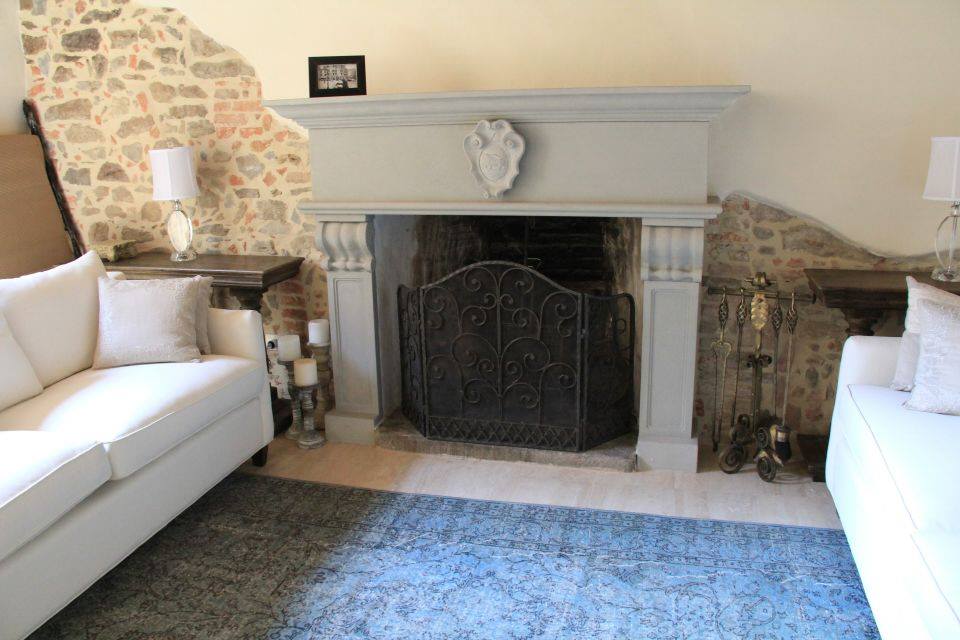
After fireplace
For us, the fireplace was the focal point of our home. I wanted to do something unique, to add something that would personalize this special part of the house. During one of my foraging trips throughout Umbria and Tuscany, I came across this old piece in an antique store yard.
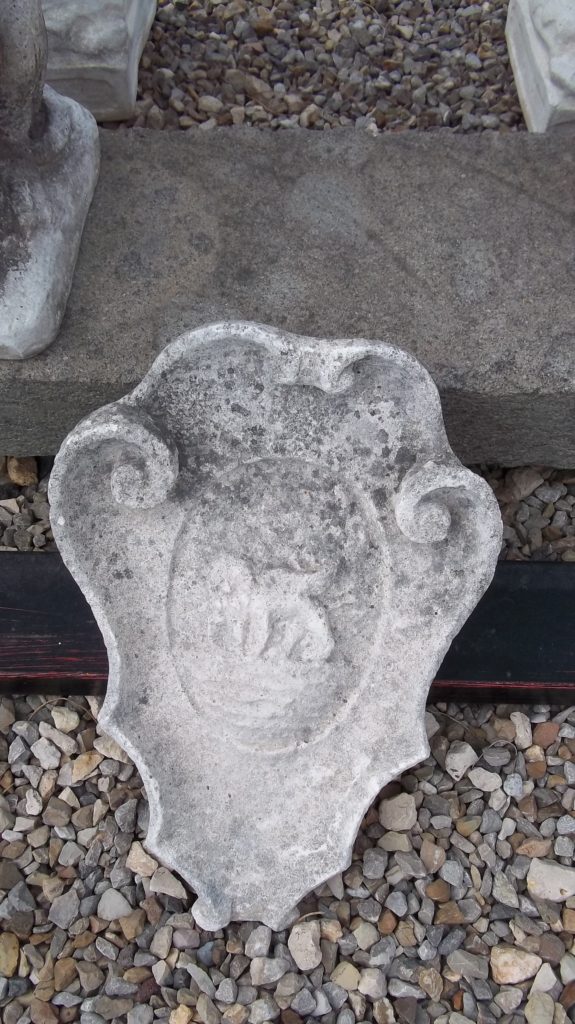
I know I’d found it – a faded winged lion, the emblem of Venice. Perfect. We were married in Venice and Peter’s family comes from a town just north of the floating city. I wanted to honor the Venetian blood flowing through his veins. So I had the fireplace company carve our magical lion and include a medieval looking ‘Z’ for our family name discreetly in the center. Now we will forever be a part of this home, no matter how many generations are to come sitting under our newly restored beams and like us, imagine the lives of those who came before them.

To suggest the renovation went smoothly would be akin to saying I speak fluent Italian. That would be an exaggeration or more correctly, an outright lie. The fact I spoke kindergarten level Italian at the time was indeed a problem. Such as the time in the early days of the renovation when I asked a contractor how he planned on fixing my roof. At least that’s what I thought I asked him. Only to discover upon repeating myself more loudly the second time, that I had actually asked him how he planned on fixing my breasts. It wasn’t just the contractor who had a red face. Apparently, the slang word in Italian for breasts and the word for roof are only one letter apart. My bad. Peter gently took me aside and suggested I improve my Italian rather quickly if I planned on being the lead on the project. That’s the moment Google translate became my best friend.
Each morning before I headed out on a buying trip for tiles or was to meet with plumber or electrician, I would look up and write down all the Italian words I would need that day. I held on to that paper like the lifeline it was. Until the end of the day when I would literally collapse in my chair at the back of the garden, too mentally exhausted to speak one more word, Italian or otherwise.
But after months of this, something magical happened. I started to learn Italian. Finally. And better yet, I could write well enough to send a text or SMS to the workers. My confidence grew. I started joking with the workers, asking about their families. I started to form friendships.
Okay, there were a few setbacks. One that comes to mind is standing in our ensuite bathroom with four men squeezed in there with me – Daniele, the contractor, the plumber and the electrician. We were reviewing where I wanted the bathtub to go. I was getting frustrated as my clear directions were being met with at first blank stares, then confused glances to one another and finally raucous laughter. It seems I was asking them where to put the big cow instead of bathtub. In my defense, tub is vasca and cow is vacca – easy peasy to mix these up.
Then there was the learning curve around Italian workers idea of being on time. There’s no such thing. If they tell you they will be there Monday at 9am it is only a suggestion. They may or may not be there. Not just at 9am, at all that day. It depends on whether something else better has come up, if the weather doesn’t agree with them or they just don’t feel like it.
I learned to really narrow them down on the date and time and then to phone an hour ahead of time to confirm and even then it didn’t always work. Patience. You need endless amounts of patience to do a renovation in Italy. Well, to do anything in Italy actually.
My own ‘before’ and ‘after’
Then one day, the dust settled, no workers arrived at 8am, no more appointments were booked on my calendar. It was over. The bulk of the work was finished. There were new travertine floors and stairs, a custom kitchen, restored beams, three new beautiful bathrooms, a new roof, revealed stone walls, updated plumbing and electrical. Our old home was new.
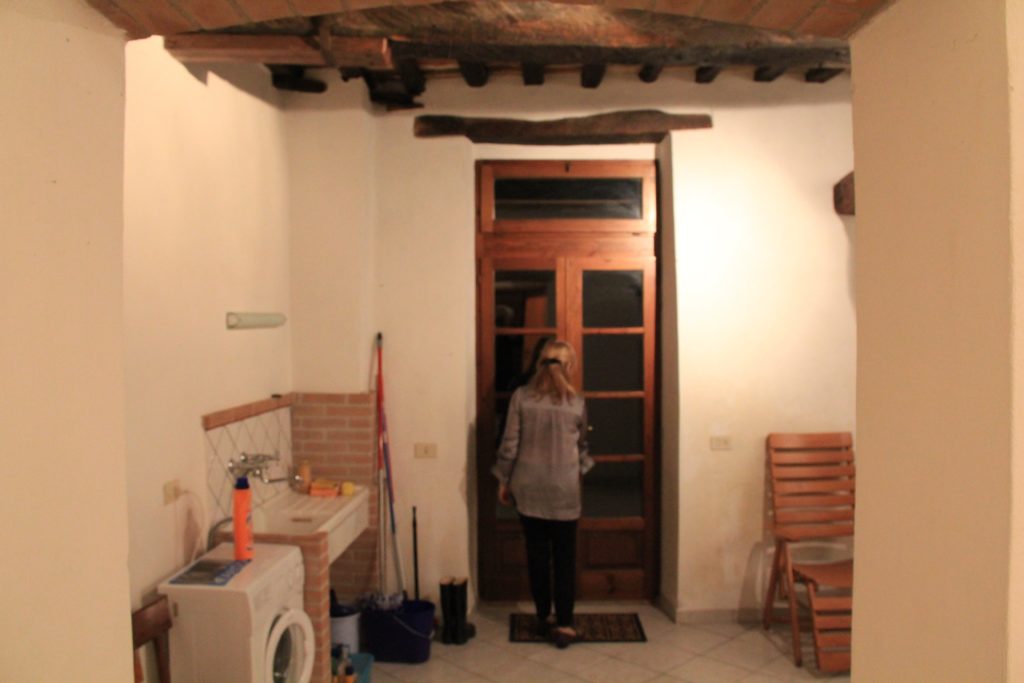
before kitchen entrance 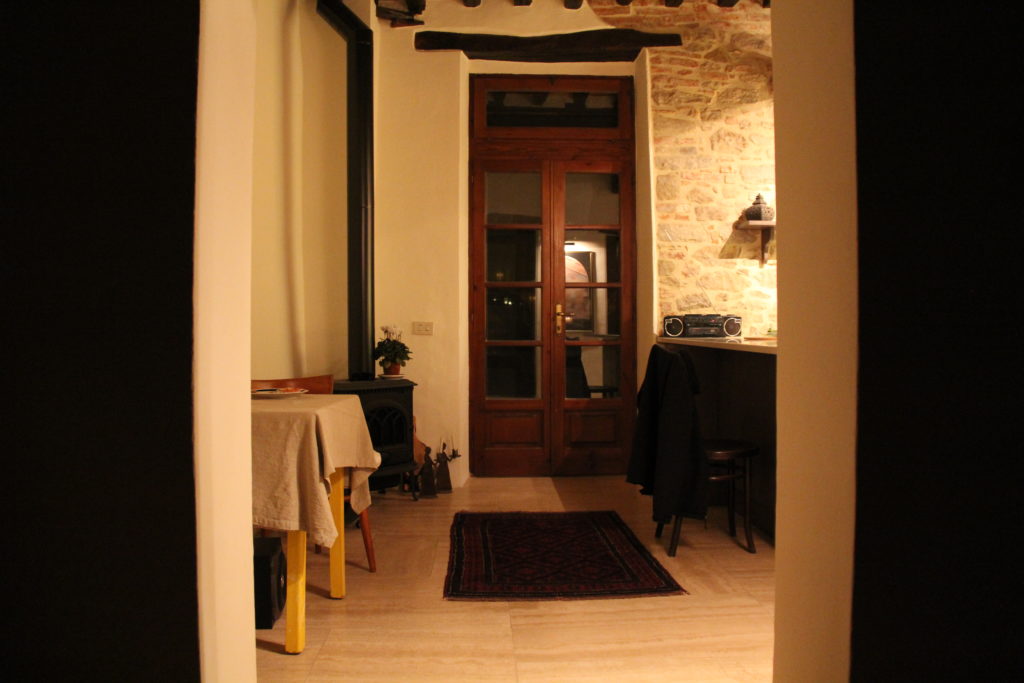
after kitchen entrance 
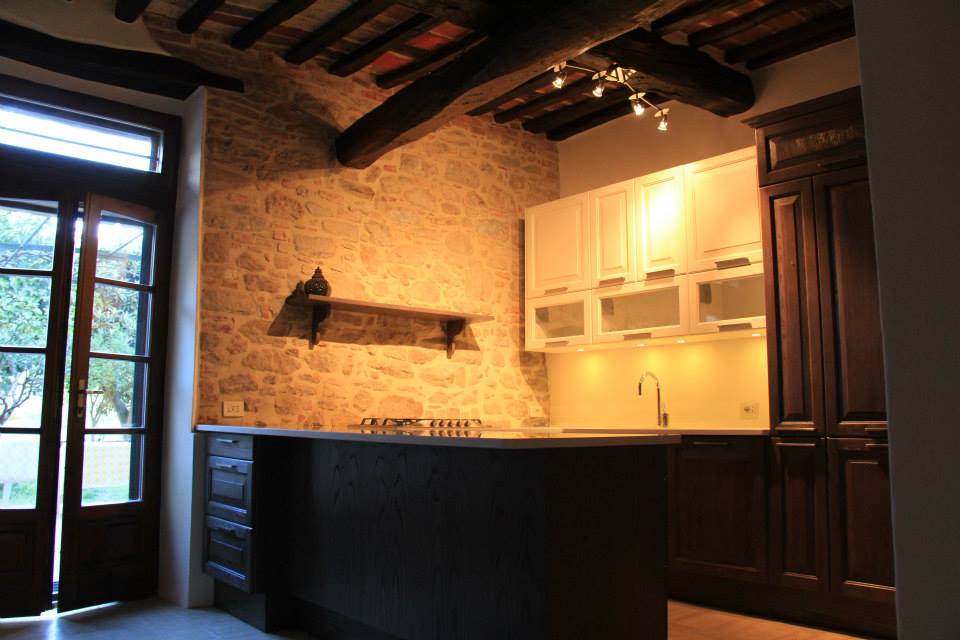
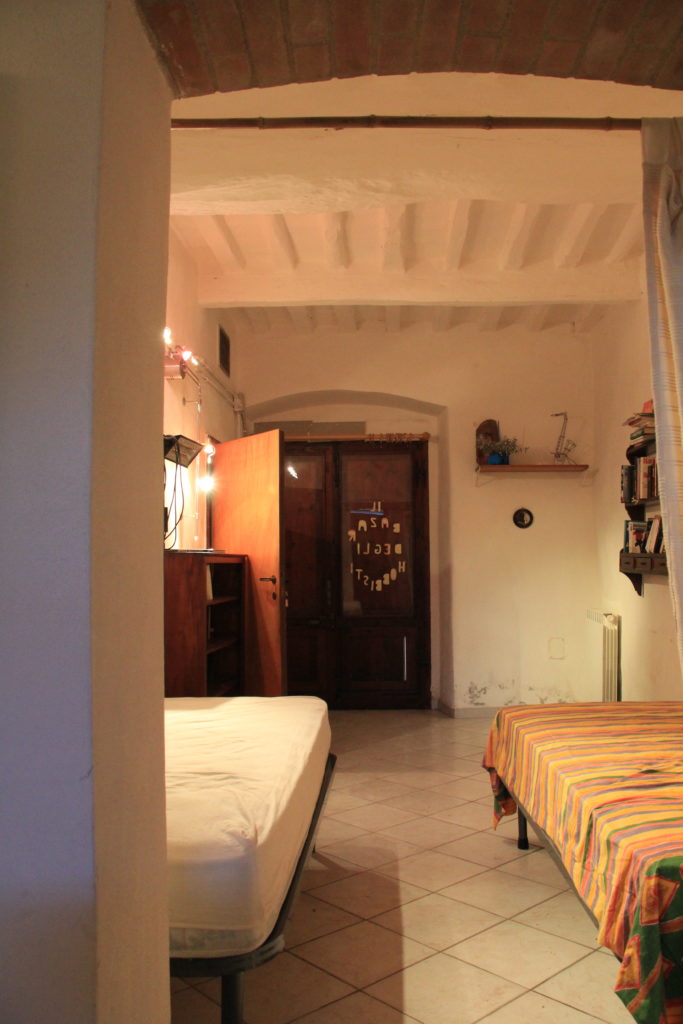
before dining room 
after dining room 



terrace before 
terrace after 
view deck
Taking on a renovation in Italy is not for the faint of heart. But it is so gratifying to see an old historical building brought back to her former glory – and then some. To have old townsfolk walk up to you in the village square and thank you for taking the time and resources to add to Paciano’s beauty.
For Peter and I ,our reward is knowing that for centuries to come our name is in the town archives. We are the family who made the newly christened Casa Vistaverde a home again.
A presto
Anna

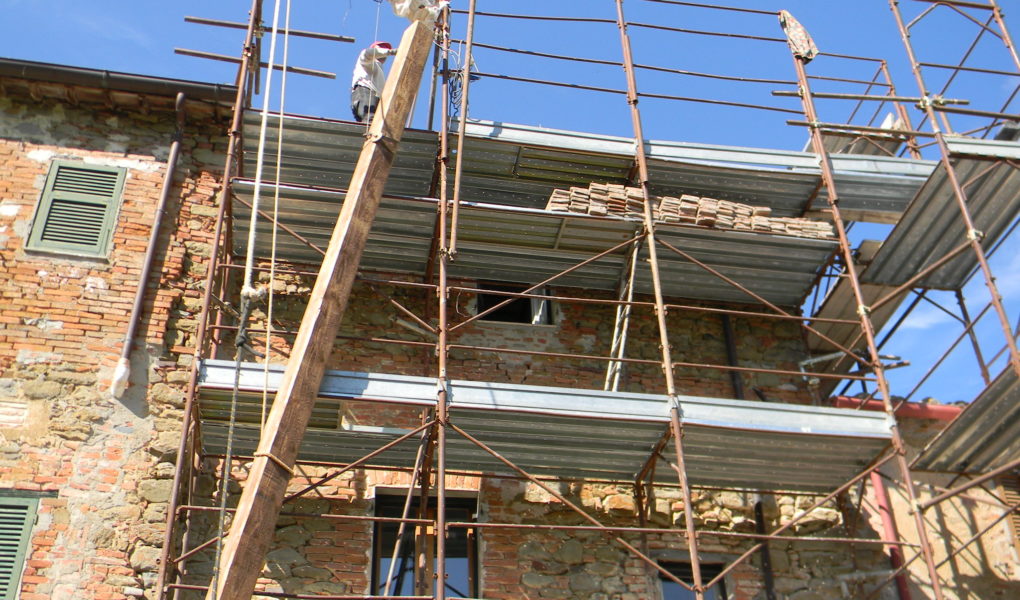
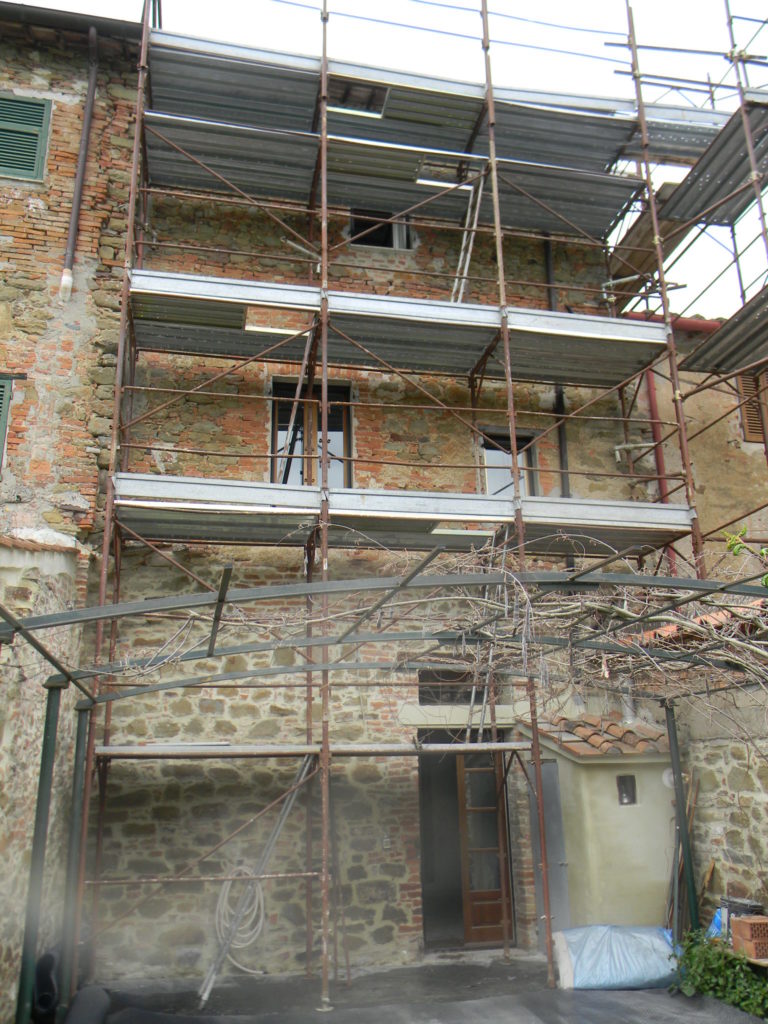
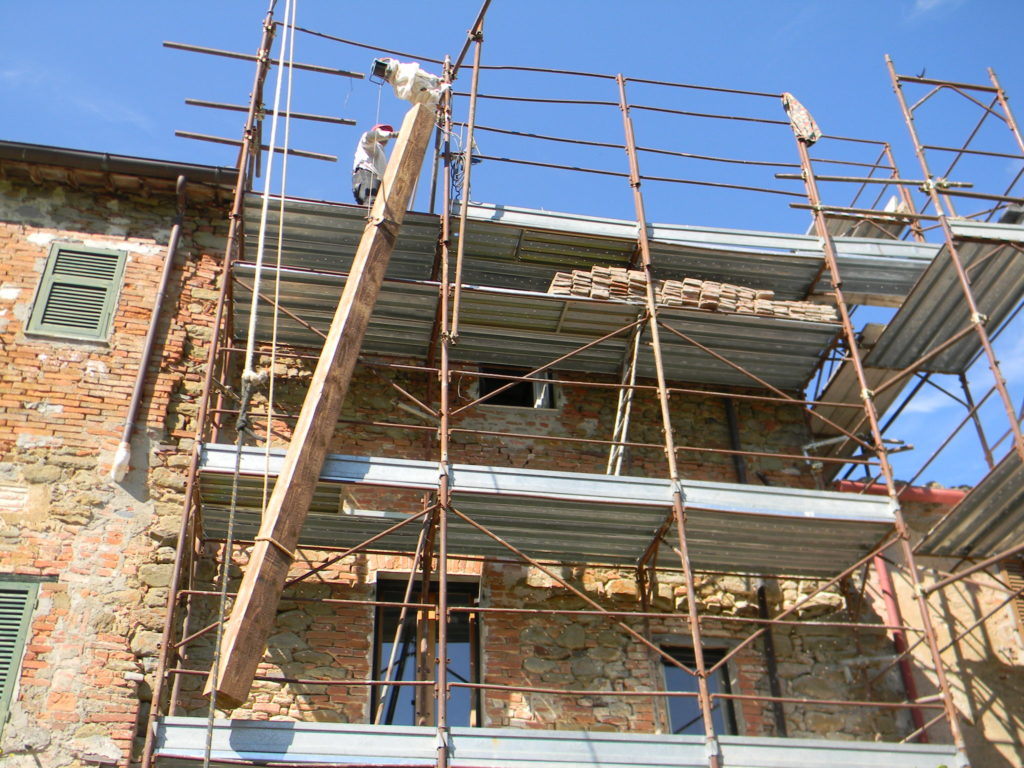



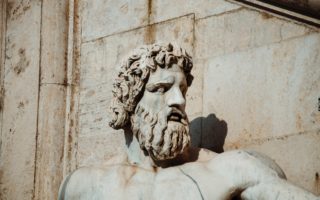




I am enjoying reading all your stories. Your Italian home is absolutely beautiful. And all the more knowing the care and work you have put into restoring and updating it.
I can say with absolute certainty, your home is one of the most beautiful. I know, because I’ve had the privilege to stay there. I love seeing your before and after photos. Having experienced the “after” it’s hard to imagine the “before” anymore. You did an amazing job!
[…] Renovating A House In Italy […]
Hello,
I understand what you have gone through. We bought an old farmhouse just at the border of Lazio and Umbria in a town called Collevecchio. It is truly wonderful to be in the midst of such lovely hills and villages with olive trees, hay fields and grapevines all around. I enjoyed your blog!